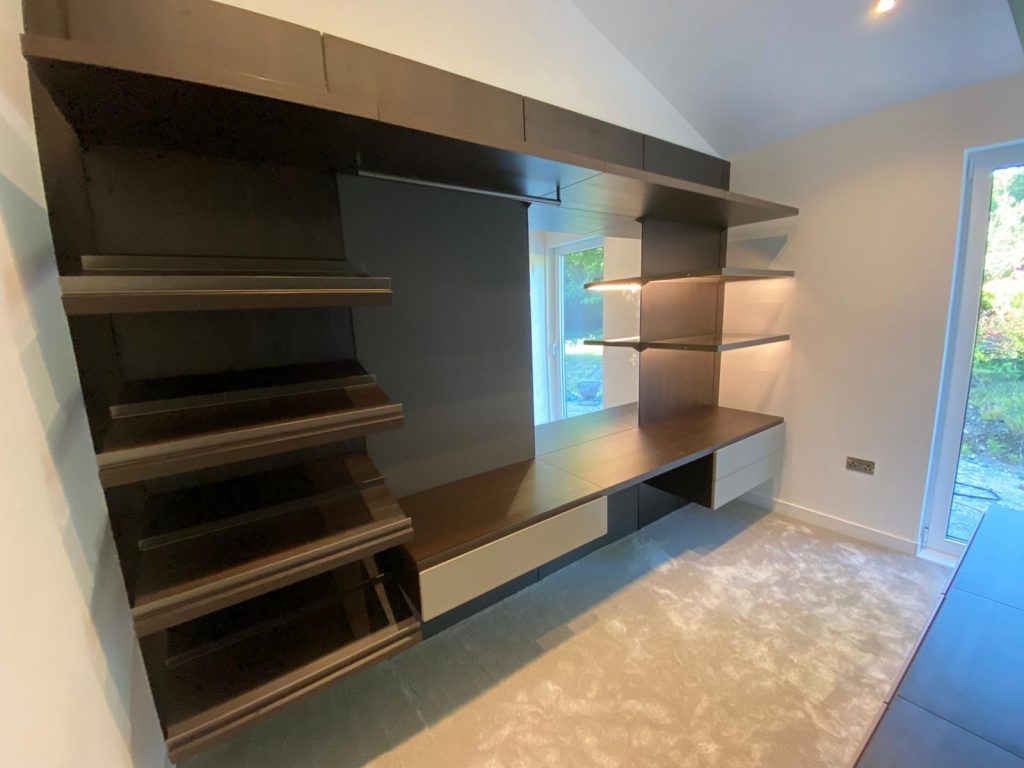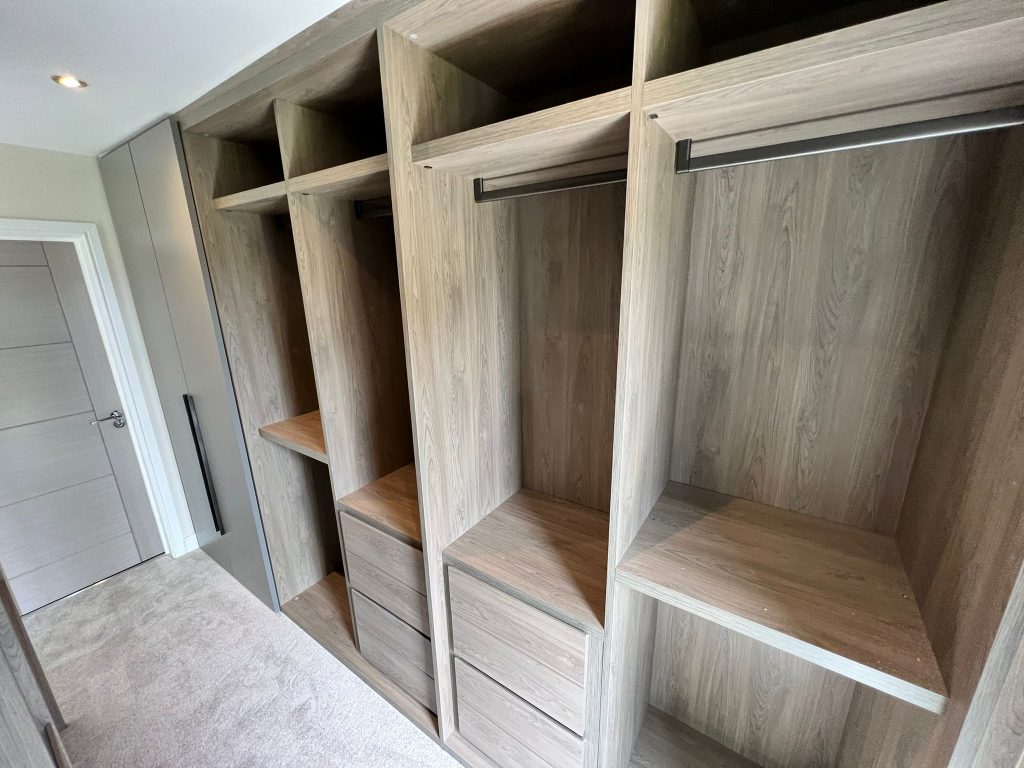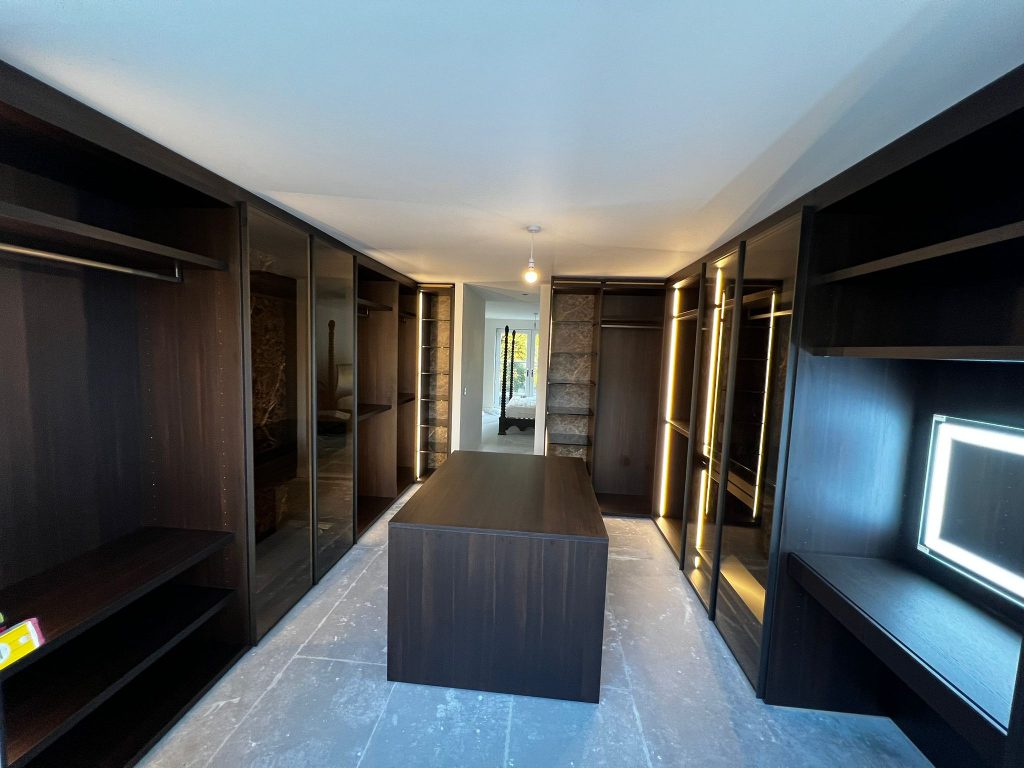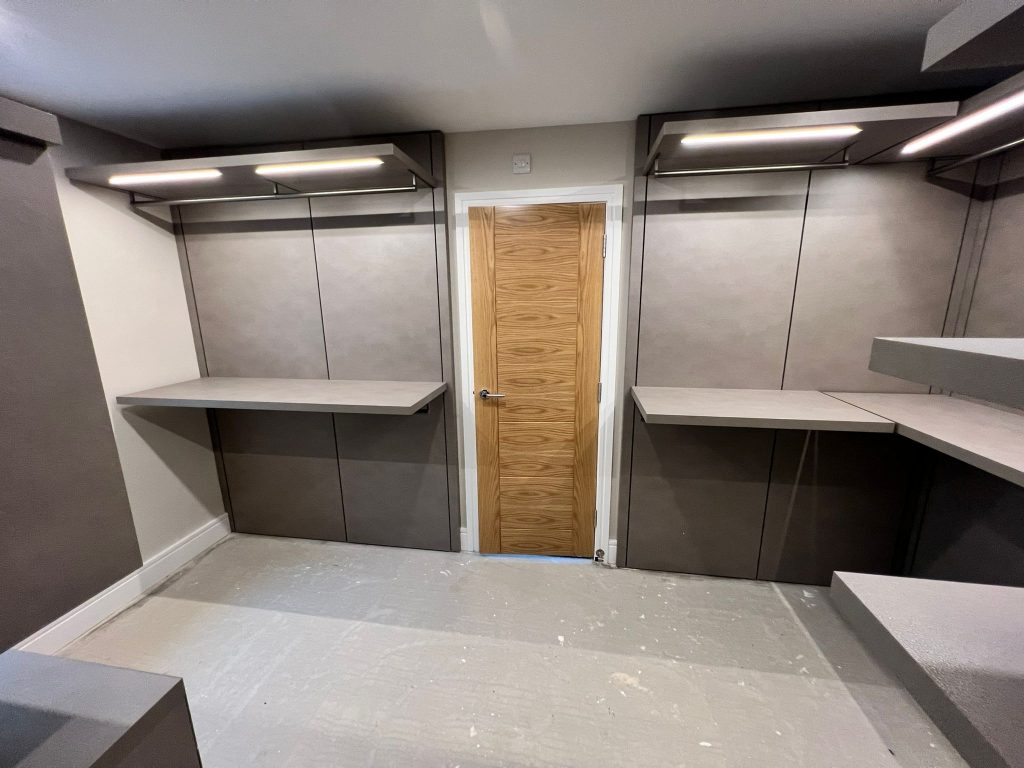Determining if you have enough space to create a walk in wardrobe? The truth is, with the right solution, you can create a walk in wardrobe in almost any space. There are some key things to consider and think about when conceptualising a walk in wardrobe, which we’ve highlighted in this guide.
The dimensions and shape of your space, will determine the layout you’ll be able to achieve. Some standard layouts include:
Single Side – this is a linear run of wardrobes where only one wall is available
Double Sided – 2 linear runs opposite each other. Great for more centralized spaces, spare rooms, walkways etc
L-Shape – creating an l-shape run might be applicable if you have 4 walls and 2 have obstructions like windows, doors or radiators
U-Shape – used for larger compositions with little to no obstructions or those which can be worked around
Whatever shape or layout your walk in is, it’s important to consider the free space you’ll have once it’s been fitted. As a rule we would consider a minimum 80-100cm space for a walkway. This gives you room to manouvre and access your belongings without feeling confined or restricted. This applies to all walk in layouts, to make sure you have enough space to move around freely.

Smaller Walk In Wardrobes
When you have a smaller space it’s important to maximize your storage potential. One key way is to maximize the height you have. Consider having double hanging rails, one higher and one lower. Don’t overload on accessories. There are some fantastic accessories that can be put in a walk in wardrobe like trouser racks or accessory trays. If you’re stuggling for space however, don’t include these things if you can’t afford to sacrifice the space. Instead opt for the basics like hanging rails and shelves to benefit from storing the most you can.
If you are making an l-shape or u-shape walk in, you’ll need to consider the corners of the room. There are typically 2 ways to create corners (when using wardrobe modules). Traditional corners are created specifically in an l-shape and are great when you can spare both length and depth. We’d say these types of corners should be no less than 95 x 95cm. You can however utilise non-traditional corners by putting 2 carcass’ against each other. This means one module will run past the other creating a space you’ll have to reach in to, but this means you won’t have to spare as much space when putting the walk in together.

Larger Walk In Wardrobes
If you have a larger room or space to create a walk in, great! But it’s still useful to think about how you’ll use the space so it can still be practical. If you have the room, you can consider mixing open wardrobes with doors. This will make a fantastic design feature and also offer you the opportunity to have items both on display and hidden away.
Dressing tables are often on the wish list for many when thinking about a walk in. There are different ways these can be incorperated. You can create a standalone dresser which can be placed anywhere, or you can fit a dresser within one of the wardrobe modules to save space elsewhere in the room and create a built-in look. This will offer a space to get ready for the day or night ahead, whilst being surrounded by all of your outfit choices.
Utilise the middle of the room by having a central island unit or seating area. These are great ways to use the extra space and potentially add more storage capability, or just somewhere to sit and put on shoes etc. Either way, remember to give yourself a minimum of 80-100cm walkway around! You don’t want to feel confined by filling up the space unnecessarily.

Building or Developing
When you are building or developing a home, in most scenarios you have some play with the spaces you can create. Whilst there are many factors involved that will determine the overall space you’ll have for a walk in, you should consider the following:
Entrance – the positions of the doorway or entrance to a space can greatly affect the way a space can be used. Always ask advice on this, as moving an entrance simply to a different position can greatly increase the amount of storage space available.
Windows – generally these can’t be moved. But consider if the space underneth can be utilised. Dressing tables or drawers are good ideas.
Lighting – make sure that any ceiling lights will not interfere with the wardrobes once they’ve been fitted in. Generally speaking our standard depth is 59cm for walk in wardrobe modules. If you are contemplating having integrated lighting in your walk in, there must also be adequate live power points in the space for these to connect to.


